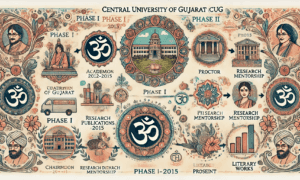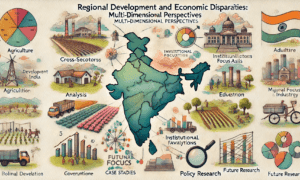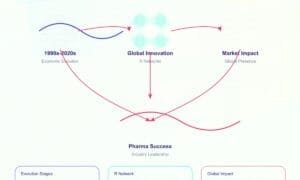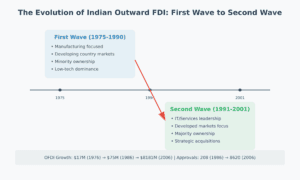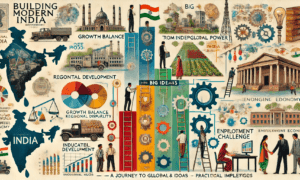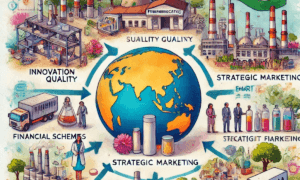The Big Picture: India’s Tech Success Story How did a developing country become a global IT powerhouse? This fascinating story shows how the right national ecosystem – from education to policy to entrepreneurship – created world-class tech companies.
Key Questions Explored
- What enabled Indian IT companies to become global players?
- How did government policies, institutions, and private sector interact?
- What lessons does this offer other developing countries?
The Secret Sauce: Four Key Ingredients
1. The Talent Factory
- Strategic government investment in elite tech institutes (IITs) and engineering colleges
- Strong cultural emphasis on technical education
- Early “brain circulation” – professionals gaining experience abroad and returning
- Private sector training institutions filling skill gaps
2. The Policy Push
- Software Technology Parks providing crucial infrastructure
- Liberal policies for software exports
- Tax incentives for IT companies
- Supportive foreign investment rules
- Active promotion of IT education and computer literacy
3. The Entrepreneurial Spirit
- Risk-taking tech entrepreneurs emerging from MNCs
- Family businesses pivoting to IT services
- Returning professionals starting ventures
- Strong domestic financial markets supporting growth
4. The Global Advantage
- Lower cost skilled talent
- English language capability
- Time zone advantage with US/Europe
- Strong diaspora networks
- Focus on quality and processes
The Global Footprint: How Indian Tech Went Worldwide
Geographic Spread
- 69% of overseas subsidiaries in developed markets
- US and UK as primary markets
- Growing presence in emerging markets
- Singapore as Asia hub
Entry Strategies
- Majority prefer wholly-owned subsidiaries (89%)
- Strategic acquisitions for new capabilities
- Near-shore development centers
- Sales and marketing offices in key markets
Case Studies: Two Pioneer Pathways
TCS: The Systematic Globalizer
- From domestic IT pioneer to global leader
- Building capabilities through selective partnerships
- Strategic acquisitions in key markets
- Focus on process excellence
HCL: The Technology Innovator
- Hardware roots to software excellence
- Learning from early US market entry
- Leveraging multinational partnerships
- Acquisition-led growth
Lessons for Other Countries
For Policymakers
- Invest heavily in technical education
- Create special economic zones for IT
- Encourage global linkages
- Support IT infrastructure development
For Companies
- Focus on building global delivery capabilities
- Invest in skill development
- Use acquisitions strategically
- Maintain strong local-global balance
Future Challenges
- Maintaining skill supply
- Moving up the value chain
- Infrastructure constraints
- Global competition
- Automation impact
Academic Abstract:
The dramatic growth of outward FDI from India over the past decade is significantly led by Indian information and software technology (IST) firms. These IST firms have aggressively adopted outward FDI as a competitive strategy for seeking overseas markets, networks, skills and technologies. This study analyzes the factors leading to the emergence of these Indian IST firms as multinationals in the global market. Applying the theoretical framework of national innovation system (NIS), the study establishes that origin of Indian IST multinationals are critically linked to the overall policy environment and strategic government intervention in skill formation, development of supporting institutions, proactive role of Indian households in undertaking human capital investment and providing risk taking entrepreneurs, and also to the firm‐level business strategies. The Indian experience shows that the development of a suitable NIS is required if other developing countries are aspiring to build their capability in the IST industry.
Learn More:
Full citation: Pradhan, Jaya Prakash (2010), ‘Multinationals from the Indian Software Industry’, in N.S. Siddharthan and K Narayanan (2010) (eds.) Indian and Chinese Enterprises: Global Trade, Technology and Investment Regimes, pp. 180–210, London & New Delhi: Routledge.
Learn More:


